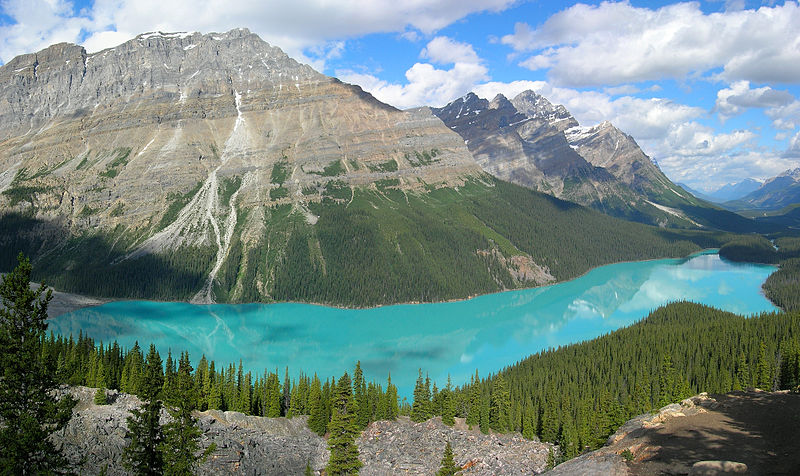Canada
Canadian public health authorities use the World Health Organization growth charts. The the only large-scale Canadian growth chart that we have found is for birthweight by gestational age. We have also found charts for Inuit and Cree populations, as noted below, but these charts were created from small samples.
Size at Birth by Gestational Age
The Public Health Agency of Canada has information about weight in Canadian newborns born at 22-43 weeks gestation. The original study with the data may be downloaded for free from the journal Pediatrics (1).
Inuit-specific information
In 1987, Canadian public health authorities performed a study about the feasibility of creating Inuit- or First Nation-specific growth charts. They found that growth patterns of indigenous people vary so much by group that a single set of growth charts for all of them would be inaccurate. Overall, the authors noted that Inuit infants may weigh somewhat more than other Canadians and that infants in some native populations have larger head circumferences.
A small study published in 1998 compared growth of ~260 Inuit children in Labrador with US growth charts (2). Inuit children were the same size as Americans at birth, but differences height and weight appeared later. The charts below show growth of Inuit children in Labrador. Note: this study used US growth charts from the 1970s. We decided to compare the Inuit values with the 2000 CDC growth charts. Inuit children were still heavier and taller (results not shown here).
This section shows only comparisons to US data; no differences between Inuit and US children were found.
Growth in other First Nation children
Studies comparing the sizes of many First Nation children have consistently found differences from the non-indigenous population. For example, several studies of Cree children dating from the 1960s to 2011 found that Cree children tend to be large from birth (3-5). Studies of the Sioux in Ontario have found similar results (6). Although poor diet can cause obesity and other health problems, the larger size of at least the Cree population has been documented back to a time when these individuals were still living traditional lifestyles (3-5).
Neurofibromatosis, Type 1 (NF-1)
Neurofibromatosis (or NF) is actually one name for a number of different disorders. The most common form is called NF1, and it accounts for 90% of NF cases. NF1 occurs once in roughly 2,500 to 4,000 births. Two other forms of NF are called NF2 and Schwannomatosis. Other rarer forms of NF exist (NF3, NF4, NF5 and NFNS). These forms are much rarer than NF1, and happen once in every 40,000 births.
Overall, NF involves the growth of tumors called neurofibromas. Neurofibroma means that the tumors grow along nerves ("neuro) and are made of fibrous connective tissue (fibroma). These tumors can become malignant (that is, cancerous). They can also make bumps under the skin, cause problems in the skeleton (scoliosis is an example), and put pressure on nerve roots. Children with NF1 may go through puberty early. For a short but good review of NF, visit the Tumour Foundation of British Columbia.
The curves here were created from two NF1 growth studies. The first study (7) examined 336 children aged 3 to 36 months. Children with conditions other than NF1 that could affect growth were not included. We have reproduced these curves with permission.
References
- 1. Kramer M.S. et al. (2001) A new and improved population-based Canadian reference for birth weight for gestational age. Can J Rural Med 108(2):e35; doi: 10.1542/peds.108.2.e3. Full text from publisher.
- 2. Tigchelaar T. et al. (1998) Growth parameters of Inuit children in coastal Labrador. Can J Rural Med 3(1):12-19. Full text.
- 3. Willows N.D. et al. (2011) Assessment of Canadian Cree infants' birth size using the WHO child growth standards. Am J Hum Biol 23(1):126-131. Abstract on PubMed.
- 4. Lavallée C. (1988) Anthropometric measurements and growth charts for Cree children of James Bay, from 0 to 5 years old. Arctic Med Res 47 (Suppl 1):204-208. Citation on PubMed.
- 5. Partington M.W. & Roberts N. (1969) The Heights and weights of Indian and Eskimo school children on James Bay and Hudson Bay. Can Med Assoc J 100(11):502-509. Full text on PubMed.
- 6. Munroe M. et al. (1984) Birth weight, length, head circumference and bilirubin level in Indian newborns in the Sioux Lookout Zone, northwestern Ontario. Can Med Assoc J 131:453-456. Full text on PubMed.
- 7. Clementi M. et al. (1999) Growth charts for young children with neurofibromatosis. Am J Med Genet 87(4):317-323. Abstract on PubMed.

